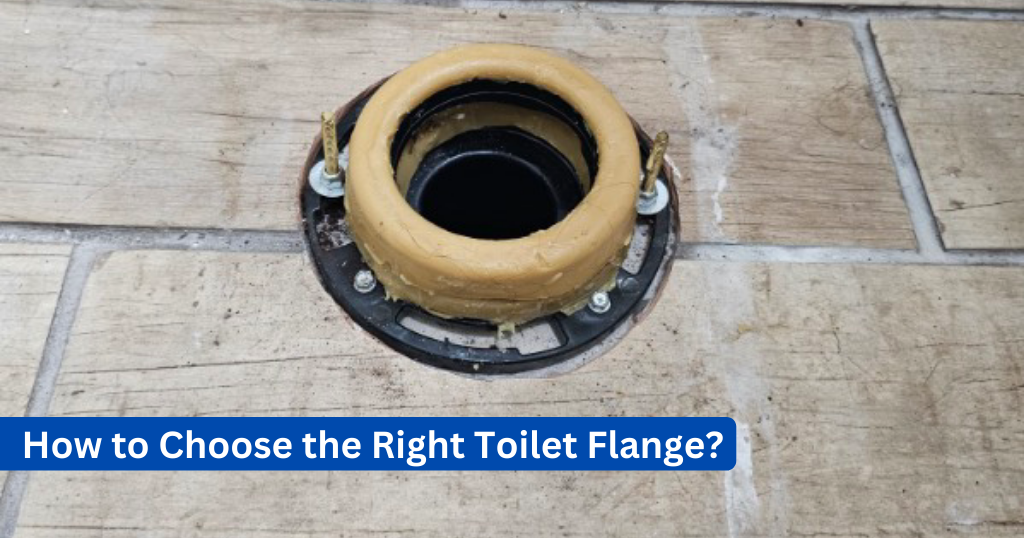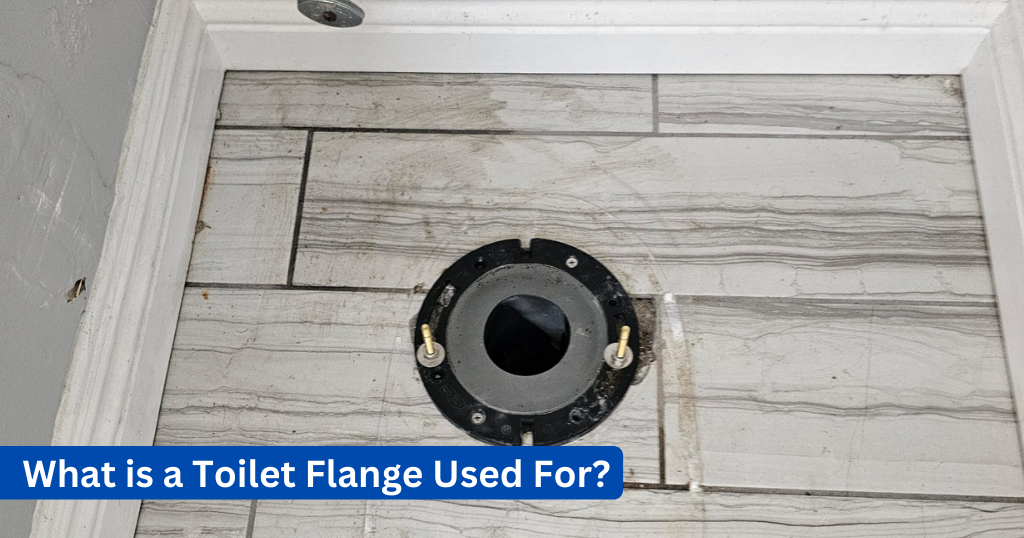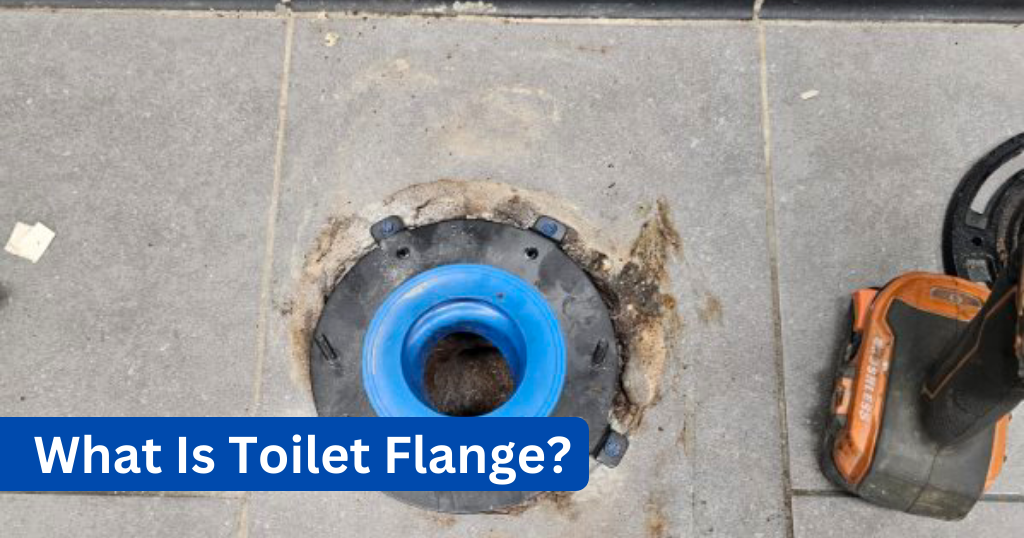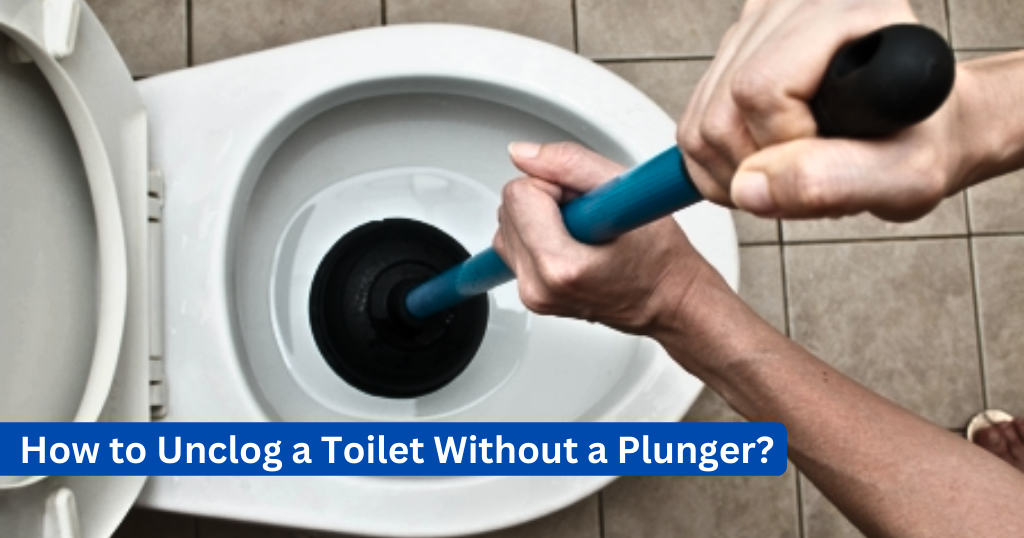A toilet flange is a circular fitting that connects the toilet to the floor drainpipe and secures it in place on the floor. It forms a watertight and airtight seal using a wax ring to stop leaks and prevent sewer gas from entering your bathroom.
The flange offers a solid mounting, connects the toilet to the home’s drainage system, and helps eliminate wobbling and odors. Common issues such as leaks or odors usually indicate damage to the flange or a failure of the seal. Choosing and installing the right flange correctly will ensure a leak-free and stable toilet.
Why a Toilet Flange is Important for Bathroom Plumbing Stability?
The toilet flange is the anchor that secures the toilet to the floor. It connects the toilet to the drain pipe and sewer drain. Its primary role is to keep a water-tight seal that prevents leaks, keeps the toilet stable, and stops harmful sewer gas from escaping. If you ignore the flange’s condition, it can lead to unstable toilets, leaks, and expensive damage to your bathroom flooring.
Key reasons a toilet flange is essential:
1. Toilet Stability
- The flange connects with bolts and holds the toilet firmly in place.
- The toilet may be wobbly or rocking, causing harm to the drainpipe or floor without a flange.
2. Leak Prevention
- The wax ring, near the flange, prevents water and waste from leaking near the toilet bottom.
- Flanges also stop sewer gas from oozing into bathrooms.
3. Protects Against Costly Repairs
- An incorrectly installed flange will cause slow leaks that go unheeded until you find mould growth or soft spots on the floor.
- Repairing the flooring and structural flaws many times costs far more than changing a simple flange.
4. Essential for Proper Waste Flow
- A flange ensures that the toilet attaches firmly to the drainage system, so waste and water flow fluently into the sewer.
- Clogs, backups, or inadequate flushing become a common issue without this connection.
If you’re facing issues like a constantly running toilet that are related to flange issues, check out our detailed guide.
How to Choose the Right Toilet Flange for Lasting Plumbing Repairs?

Choosing the right toilet flange depends on material compatibility, flange height, and the installation location. You can select from durable PVC or corrosion-resistant metal and brass flanges. Use flange extension kits when needed to match the floor thickness. Making sure the flange fits your plumbing pipe size and type ensures a secure connection and helps prevent future plumbing problems.
Key factors to consider when choosing the right flange:
- Make sure the flange size matches the toilet drain and pipe diameter exactly.
- Consider the flooring type and thickness to determine the right flange height or use extension kits.
- Choose flange materials based on the pipe type and environment for durability and resistance to corrosion.
- Check the bolt pattern and ensure it is compatible with your bathroom flooring.
- Focus on ease of maintenance and long-term reliability to reduce repair needs.
What is a Closet Flange?
A closet flange is a floor fitting that connects the base of the toilet to the waste pipe. It holds the toilet to the floor, provides stability, and creates a seal to prevent water leaks and sewer odors.
Difference Between Closet Flange and Toilet Flange
Both terms describe the same plumbing part, but they differ mainly in terminology based on context. Closet flange is a traditional term that refers to the toilet when called a “water closet.” Toilet flange is the modern term used in everyday conversation. Functionally, they are the same; both secure the toilet and connect it to the drainage system.
What is a Toilet Flange Used For? It’s Essential Plumbing Functions

The toilet flange is used to secure the toilet, connect it to the home’s sewer drain, and support a wax ring or modern seal. It ensures the toilet remains stable, prevents water leaks, and keeps sewer gases from entering the bathroom.
Some uses of flanges are listed below:
1. Secures the Toilet to the floor
The toilet gives a firm base where the toilet is guzzled down. Without flanges, the toilet will wobble or separate from the drainpipe.
2. Connects the Toilet to the Drain Pipe
A flange acts as a connection between the sewer line and the toilet, ensuring waste flows into the drain system.
3. Creates a Watertight Seal
The flange prevents water leaks and sewer gas from entering your bathroom with the help of a wax ring.
4. Prevents Sewer Gas Odours
A correctly installed flange block prevents irritating odour and dangerous sewer gases from leaking into your home.
5. Supports Toilet Stability
A flange is perfect for toilet stability because it holds the toilet firmly in place, minimising stress on the drainpipe and avoiding cracks in the flooring.
6. Maintains Bathroom Hygiene
A flange is the very best option for bathroom cleaning because, in keeping a bathroom safe and clean, a flange plays a vital role by preventing leaks.
Want to learn how to maintain your entire bathroom plumbing system and prevent common issues? Check out our practical guide on essential plumbing maintenance tips.
Types of Toilet Flanges: Materials and Options for Every Plumbing System
Choosing the right toilet flange material and type is essential for a secure, leak-free connection. This choice helps extend the toilet’s lifespan and prevents costly repairs. Here is a list of common toilet flange types:
PVC Toilet Flanges
Lightweight and resistant to corrosion, these flanges work well with plastic piping systems.
Cast Iron Flanges
These flanges are durable and suited for traditional cast iron plumbing.
Copper Flanges
Corrosion-resistant and highly durable, these are commonly found in copper pipe systems.
Brass Toilet Flanges
Rust-resistant and long-lasting, these flanges are popular due to their strength and reliability.
Stainless Steel Flanges
These flanges are highly durable and resistant to rust and corrosion, making them suitable for commercial or industrial settings.
Aluminium Toilet Flanges
Lightweight and resistant to corrosion, these flanges are less common but useful in specific situations.
Rubber Flanges (Flexible Flanges)
Flexible and great for repair jobs or uneven floors, these flanges accommodate slight misalignments.
Offset Toilet Flanges
These are used when the existing flange is off-center from the drainpipe, allowing a shift in the connection point.
Repair Flanges / Flange Repair Rings
These are designed to fix damaged or broken flanges without requiring a full replacement.
Galvanized Steel Flanges
Coated to resist rust, these flanges are often used in older plumbing systems.
ABS Plastic Flanges
Similar to PVC, these flanges are lightweight and resistant to chemicals and corrosion.
Composite Flanges
Made from reinforced plastics or engineered materials, these flanges meet specific high-performance needs.
Lead Flanges
Once used commonly, these are rare today due to health concerns, but you may encounter them in ancient buildings.
Choosing the correct flange type and material depends on your plumbing pipe fitting, floor conditions, and installation needs for effective and lasting performance.
Signs Your Toilet Flange May Be Broken
- The toilet wobbles even after you tighten the bolts.
- Water leaks around the toilet base.
- You notice persistent sewer odors near the toilet.
- The toilet doesn’t flush properly.
- There are visible cracks or rust on the flange.
- Toilet bolts are loose or broken.
- The flooring around the toilet is damaged or feels soft.
- The toilet keeps running or leaks inside.
- You see mold or mildew around the toilet base.
- The wax ring fails repeatedly.
- The toilet shifts position over time.
Additionally, if you are having trouble with the toilet running continuously, and you are unsure why, read our comprehensive guide to identify and fix the problem quickly.
Inspection Tips
- Test for wobbling after tightening the toilet bolts.
- Look for water around the toilet base.
- Smell for sewer gases that might indicate a failing seal.
- Regularly check the flange for damage or corrosion.
- Routine plumbing maintenance is essential to catch these signs early and avoid major repairs.
Can a Toilet Work Without a Flange?
A toilet cannot work without a flange. The flange holds the toilet to the floor, creates a water-tight seal to prevent leaks, and blocks sewer gas. Without it, toilets will wobble, leak, and let harmful gases indoors.
Frequently Asked Questions
What does a toilet flange do?
A flange is also known as a closet flange that attaches your toilet to the drainpipe and plugs it with a wax ring, ensuring accurate flow of waste and water in the sewer system.
What are the two main types of flanges?
The two main types of flanges are PVC toilet flanges and brass toilet flanges.
What is the most commonly used flange?
The most commonly used flange in industrial piping and general plumbing is the Raised Face (RF) Flange.
Does a toilet flange need to be flush with the floor?
Yes, a toilet flange requires a flush with the floor because the toilet will wobble, leading to leaks at the bottom without a flush with the floor.
What are the symptoms of a broken toilet flange?
The most common signs of a broken toilet are a wobbly toilet, water leaks around the base, visible cracks, and a wax ring that repeatedly fails.
What are the benefits of flanges?
The flange connects with bolts and holds the toilet firmly in place. And the toilet may be wobbly or rocking, causing harm to the drainpipe or floor without a flange.



